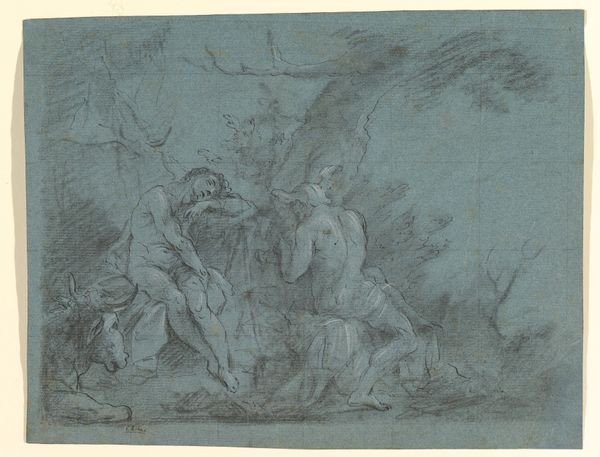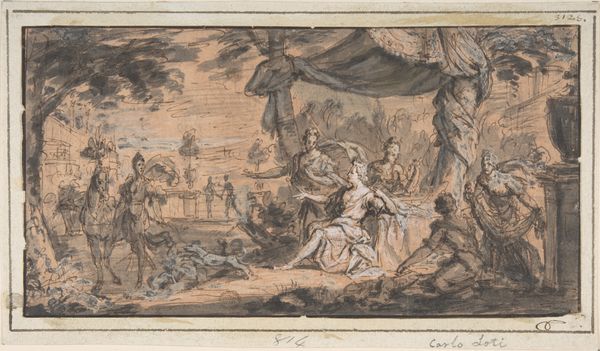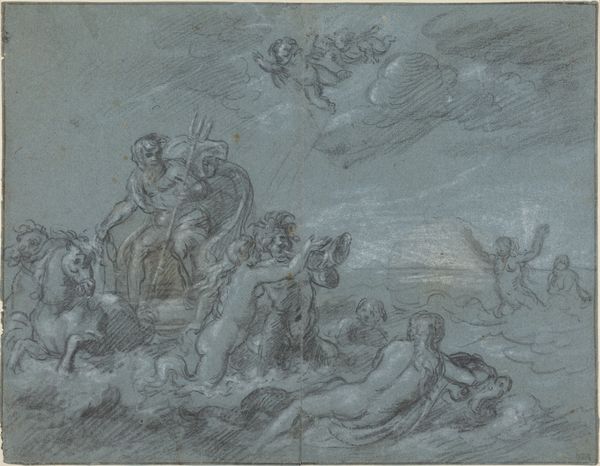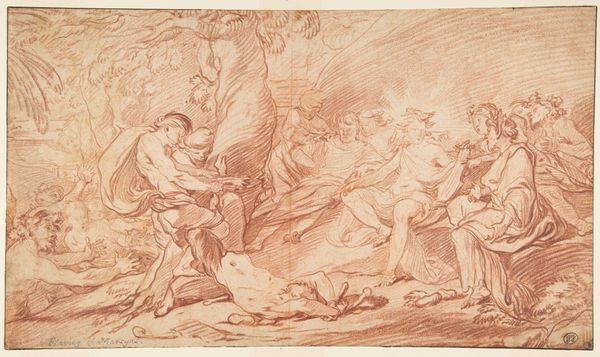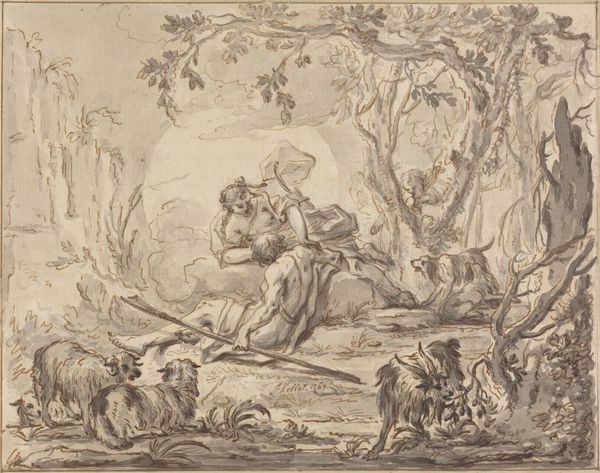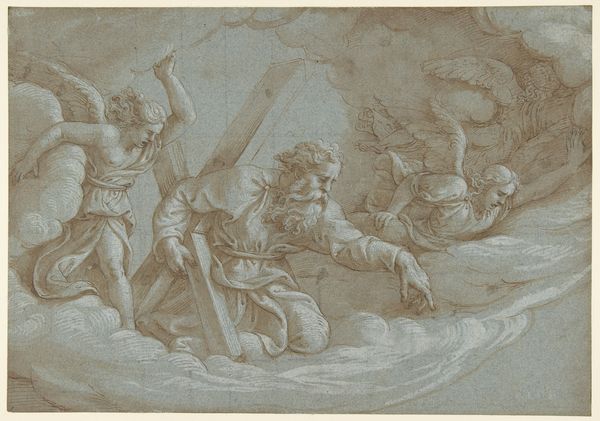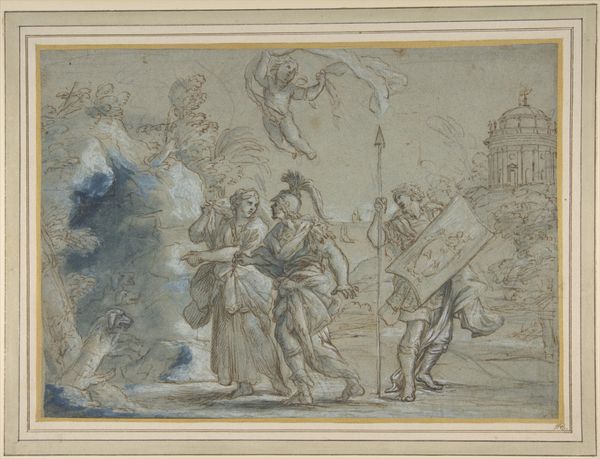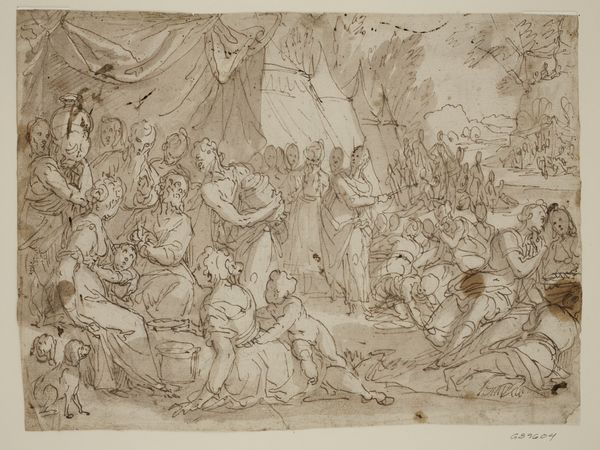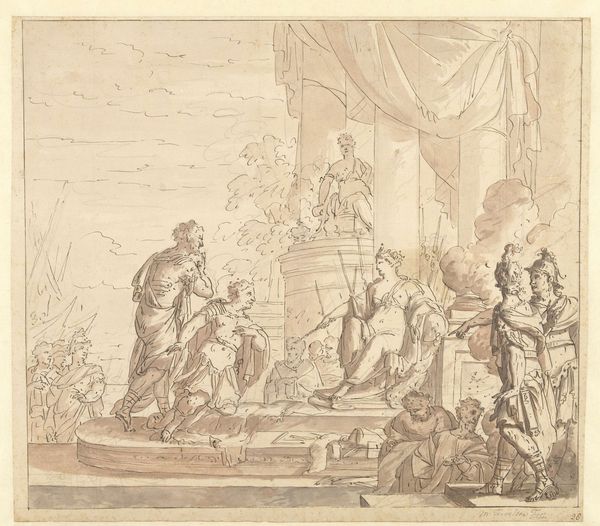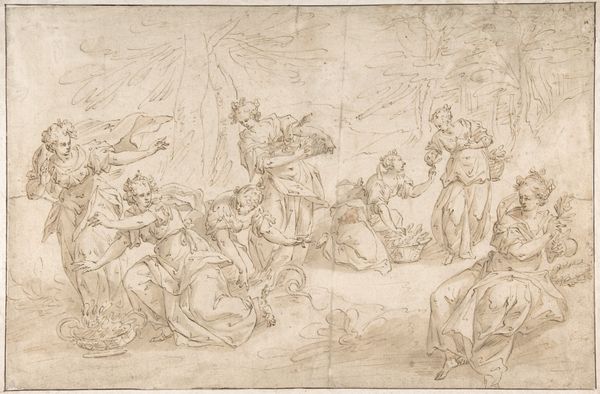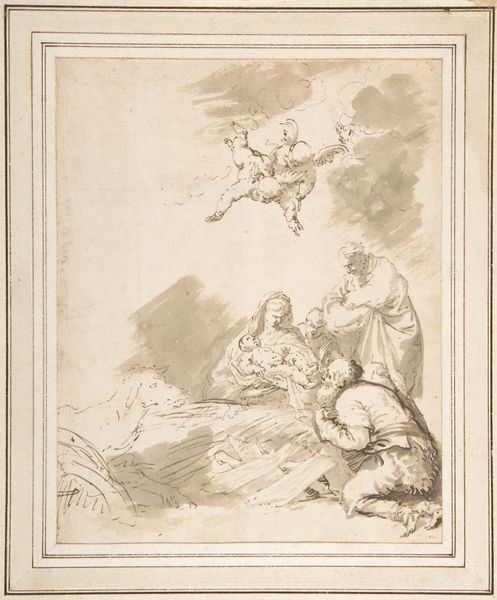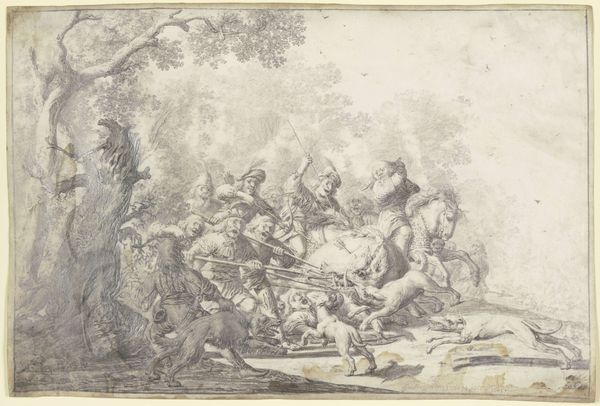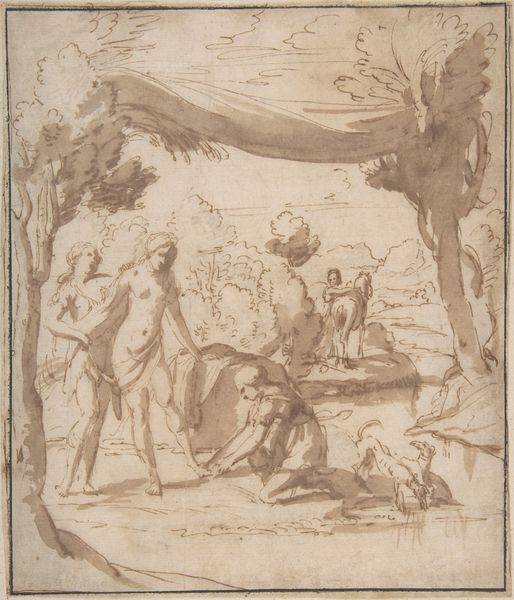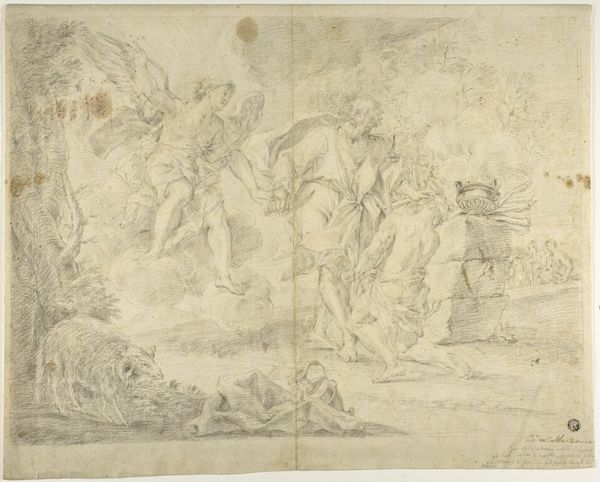
drawing, etching, paper, ink, pencil
#
drawing
#
narrative-art
#
baroque
#
etching
#
pencil sketch
#
landscape
#
etching
#
figuration
#
paper
#
ink
#
pencil
#
watercolour illustration
#
genre-painting
#
history-painting
#
watercolor
Dimensions: height 176 mm, width 242 mm
Copyright: Rijks Museum: Open Domain
Curator: This artwork is attributed to Elias van Nijmegen, and it's tentatively titled "Theseus Departing Ariadne on Naxos(?)." It’s created using ink, pencil, and etching on paper, likely dating between 1677 and 1755. Editor: It evokes such a profound sense of abandonment. The lonely figure on the shore against that turbulent sky—it’s all so poignant, even in this relatively simple drawing. Curator: Van Nijmegen was quite active in creating historical and mythological scenes; you can see this interest reflected in this work through his references to the story of Ariadne who assisted Theseus to escape from the Minotaur. The subject matter would have resonated deeply with a cultured 18th-century audience, steeped in classical literature. It served as both entertainment and moral lesson. Editor: The visual language here is remarkable. Observe how Cupid hovers above, an arrow poised—a clear invocation of love's betrayal. Then you notice Ariadne’s posture; one arm outstretched towards Theseus' ship. It seems the visual motif speaks to heartbreak through time. The sea, a recurrent metaphor for separation and longing, becomes part of a larger conversation on themes of trust and abandonment. Curator: Yes, I see your point about Ariadne reaching for the departing boat; her posture might serve as an appeal. The image seems unfinished; this might very well have been created as an example for other, larger scale works. It provides valuable insight into how the artists were trained to create works which communicated socio-political ideas as much as emotion. Editor: I see how an artwork like this, in that time, served to underline moral lessons about social values. But the emotional resonance of that central symbol, Ariadne alone on the shore, her very pose mirroring rejection transcends its original socio-political lesson; its visual language pierces through history to reveal profound enduring themes. Curator: That’s a powerful idea; by linking these cultural memories that you pointed out with his style, and baroque aesthetics that shaped artistic output at that moment we may also understand the larger political dynamics at the time and the way artists adapted them. Editor: Indeed, and it is the synthesis of those different components what provides artwork with lasting fascination.
Comments
No comments
Be the first to comment and join the conversation on the ultimate creative platform.
